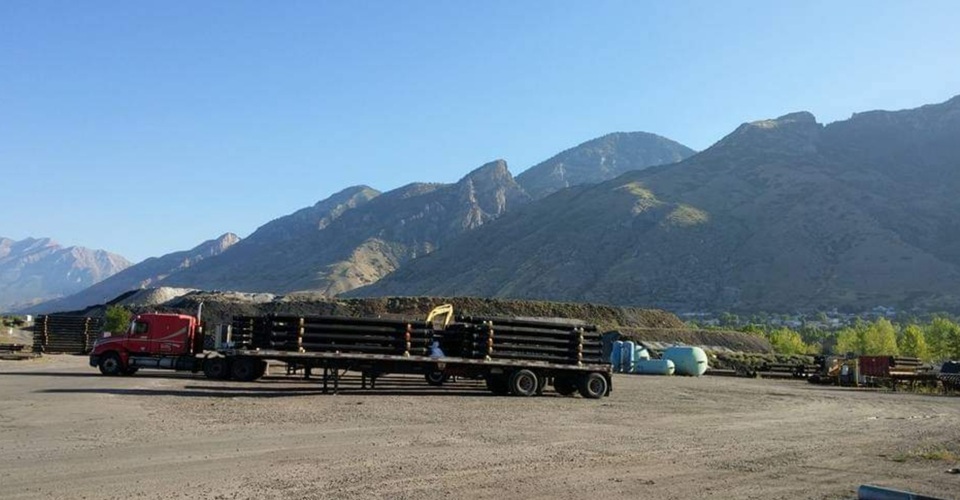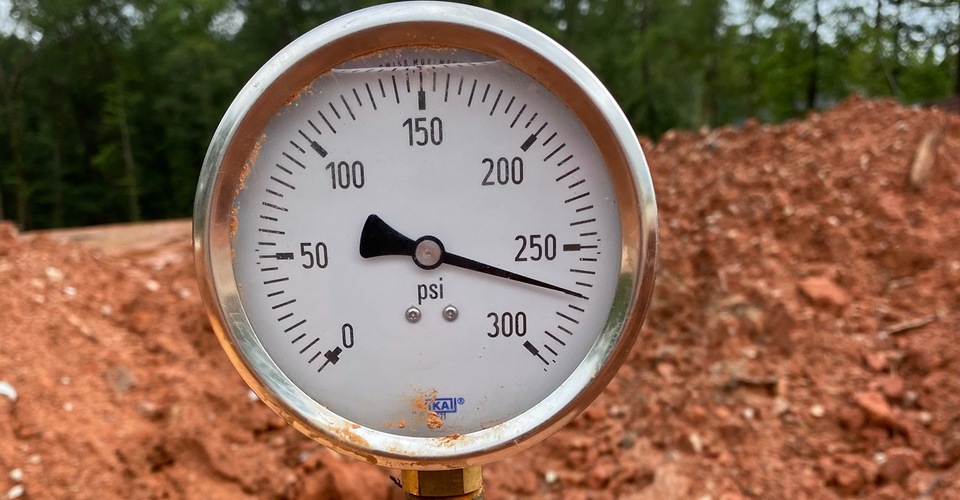Dear Ditch Doctor,
Out here in the western United States, we wind up with a lot of pipelines installed up or down serious hills, dare I say mountains as well? We are good at the construction part, yet time after time we struggle with getting a satisfactory post-installation hydrostatic test on the pipeline, especially with inclined installations. Often the pipeline drops anywhere from 20 to 50 psi on the gauge and can do that several times or more until we take some sort of drastic redo/restart on the test procedures.
Rarely is there ever a true leak involved; we just seem to “battle the gauge” with repetitive pumping, draining, refilling, blow-offs, and other stuff until somehow — wham! — it passes. Often the pipeline drops anywhere from 20 to 50 psi, far more than the 5 psi allowed by the AWWA standards, so we never even get the opportunity to check for “recovery allowance,” i.e., part 2 of the AWWA hydrotest. Is there a TRICK I’m missing, or is it just that TREATS don’t exist in this line of work?
Sincerely,
Harried Halloween in Hayden, CO
Dear Harried:
Glad to hear of your experienced confidence in constructing things! Let me try to help you with things you’re suffering past that. The first rule of success in hydrostatic testing of Ductile iron pipelines is operating in strict adherence to a few basic rules:
(1) Fill from the lowest point, bleed air from the highest point. Not close to each, but at each location.
(2) Fill slow, and let it blow. Filling too fast (turbulent flow) or not having an appropriately sized air-release mechanism at the high end virtually guarantees you will trap air pockets within the pipeline, even if it’s laid “flat and straight.”
(3) Never fill from the high side. That is a guaranteed air-trapping invite, and often creates hardships far beyond the norm that we’d have to cover in a different discussion.
(4) Losing more than 5 psi is not the end of it all. While this would disqualify you from “passing the test,” it offers you no insight as to what’s really going on. For that, you need to go diagnostic, and there’s an easy way to do that. A simple Google search for “McWane Double Bump” will put you on the right path. You’ll even find a handy tip sheet and data tracking form there.
Is it a leak or just trapped air? Be confident with your pressure test results by downloading and using this handy Double Bump Test Tip sheet!
Lastly, and certainly, on all inclined installations, it is wildly helpful to place a pressure gauge at both the low point (from where you’re pumping) and the high point (where you’re blowing air out of the pipeline). Doing so, and knowing the relationship of a water column vs. pressure created (0.433 psi per vertical foot of water), you can compare the pressure values top and bottom to gauge if the pipeline is hydraulically tight despite the pressure drop experienced.
Much like a balloon will not stay inflated if it has even a microscopic pinhole, or a thermometer won’t stay red if there’s a hole in the tube, a pipeline with a true leak — especially an inclined one — will typically drop to zero pressure in as short a period as an overnight sit.
If it stays at let’s say 64 psi overnight, then at least we know there’s no need to check for leaks below an elevation of 148 feet above the lower gauge’s location. That part is leak-free, i.e., the red part of a thermometer doesn’t lie!
So, there are a few TRICKY TREATS to help you through, reliable and proven, just like Ductile iron is made to be!













